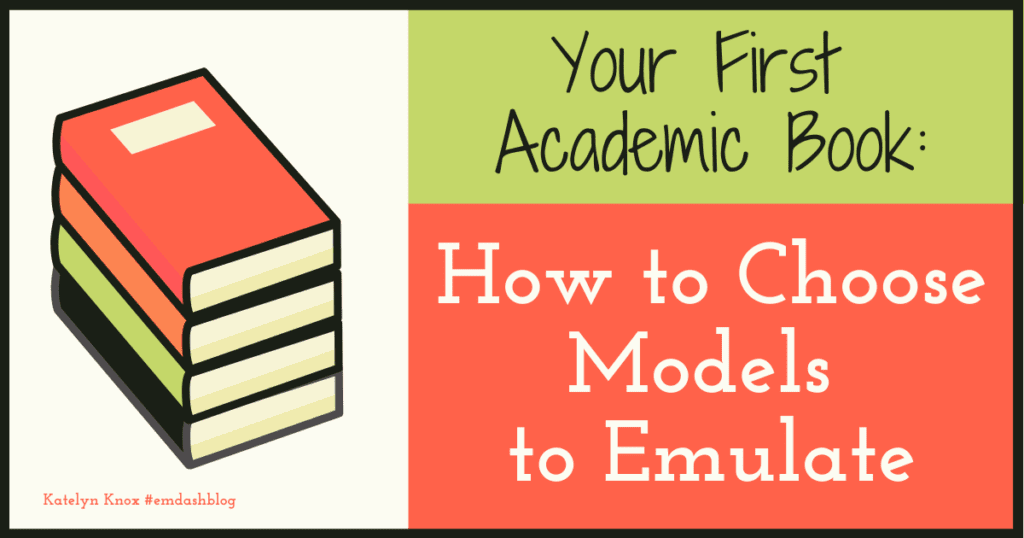Are you working on your first scholarly book, struggling to distill your book’s tightly argued, significant claim? Have you been wondering if your argument will emerge as the sum of its parts?
I (Katelyn), too, was there not long ago, existentially afraid that my book had no argument. I tried various tactics, like writing through the proposal or adding up the sum of my chapters, but simply doing A plus B plus C plus D doesn’t create an argument.
In this post, we’ll help you take the first steps to producing a confident book argument. (Go further with The Dissertation-to-Book Workbook from the University of Chicago Press; use code UCPNEW for 30% off!)

What is a book argument?
A book argument is “(1) your book’s single significant claim or idea (2) articulated in two to three related propositions (3) around which your book is organized, (4) emerging from or linked to some scholarly conversation, (5) supported with evidence to convince the reader of its validity, and (6) tangibly advanced by each chapter” (The Dissertation-to-Book Workbook, 155).
The tricky part? Your argument must center the evidence you study. As an editor, I (Allison) define the book argument as being about the book’s specific body of evidence, not just the claim about significance. Sources are important, and what you say about them matters. This helps distinguish between argument and claims for significance.
What is a “claim for significance” and how does it relate to a book argument?
A “claim for significance” is your book’s portable insight–the “so what” that explains why your study matters. It’s part of your argument, but not the entirety. Your argument must center the evidence. Think about how this book will help colleagues think differently, consider your topic in a new light, or change how they look at their sources. What part of what you say will apply beyond your own sources?
How do I know if my book is organized around its argument?
Structure is part of your argument. How you chunk and order chapters foregrounds certain claims and causes others to recede. To assess if your organization supports your claims, articulate your book’s “organizing principle”–the logic undergirding your chapters.
Organizing principle leads to the key question your book asks and what it can argue. A book about families in Francophone West African literature laid out by time period can ask how conceptions of family changed over time. If each chapter discusses a different author, it asks how various authors theorized the family. If each chapter discusses a different geographical concept, it asks how conceptions of family vary geographically. If each chapter discusses a theme, it asks what themes authors use to theorize family. Same book, different layouts, different arguments.
To articulate your organizing principle, complete “each chapter explores a different [blank]”, or use Chapter 2 of our workbook to probe your organizing principle.
How can I produce my book’s argument?
Use “Book Questions” and “Chapter Answers” instead of drafting an argument. This focuses on evidence and ensures a strong relationship between structure and main claims. (We go much deeper into Book Questions and Chapter answers in this post and the workbook.)
Book questions are simple, direct, and about your evidence. They help track your book’s body of evidence and pare down thinking to the most important argumentative strands. Your book will do more than answer this question, but the question must be about the evidence. Book questions are asked by the whole book, and each chapter provides a direct, varied answer.
Chapter answers are one-sentence responses for how each chapter answers the book questions, advancing the book argument in chapter-specific ways. Imagine the chapter’s sole purpose is answering the book question and draft exact chapter-specific answers to each book question, addressing all key elements in one sentence. Book questions are the book’s priorities; chapter answers track how each chapter advances that argument. It’s hard and messy, but important for clarifying each chapter’s contribution.
How else are Book Questions and Chapter Answers useful?
Book Questions and Chapter Answers give you your book on the page and a benchmark to analyze if chapters serve the book. They provide a proto argument anchored in evidence, showing how each chapter advances key argumentative strands. They are a genre-less snapshot of your book’s highest-order priorities, and how your chapter advances them. With tweaking, they provide fodder for a strong, argument-driven proposal and scripted genres like your book and chapter introductions.



